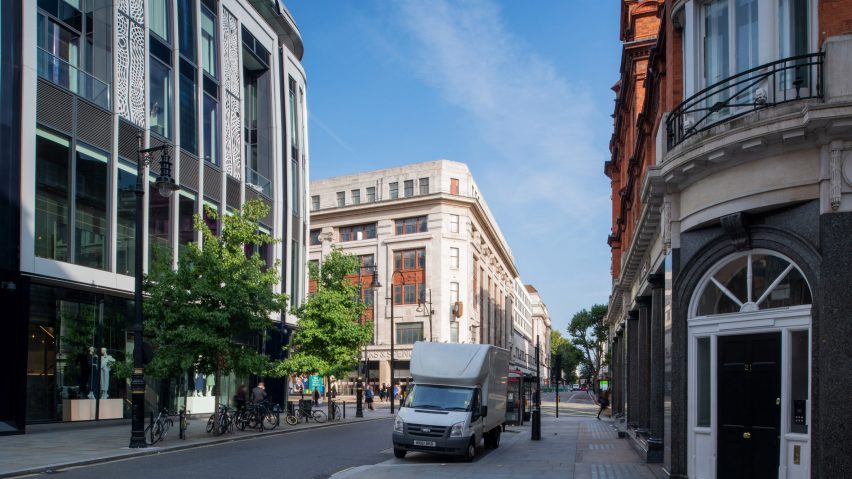London mayor Sadiq Khan will not intervene to stop the controversial demolition of the Marks and Spencer store on Oxford Street after a "thorough assessment" of its carbon footprint.
Following a review, the mayor of London's office has determined that the demolition of the art deco Marks & Spencer (M&S) flagship store can proceed as it conforms to the London Plan, a framework that sets out standards for the development of the UK capital.
"After a thorough assessment of this proposal, including the total carbon footprint involved, it was determined that grounds did not exist to allow the mayor to intervene," said a spokesperson for the mayor of London.
"The mayor can only intervene in council planning decisions where the proposed scheme does not conform with the London Plan."
City of Westminster will make final decision
The City of Westminster approved plans to replace the store with a building designed by UK studio Pilbrow & Partners last November.
This decision was initially reviewed on 7 March by London mayor Khan, who chose not to intervene despite widespread condemnation of the plans for its embodied carbon and heritage impacts.
However, his office reviewed the decision again last week after it published updated planning guidance on whole-life cycle carbon assessments.
The decision not to intervene means that the fate of the building will be determined by the City of Westminster.
"[The decision] will therefore remain with Westminster City Council to determine the application," added the spokesperson for the mayor of London.
Demolition widely criticised
Marks & Spencer's decision to demolish its flagship store has been widely criticised, with the Twentieth Century Society launching a petition calling for the retailer to abandon its plans.
The proposal would reportedly waste the embodied carbon of the existing building and generate an additional 39,500 tonnes of carbon dioxide emissions.
However, the architecture studio behind the building designed to replace the existing store, Pilbrow & Partners, argued that the new building will have superior operational performance.
"The new building offers tangible and substantial carbon benefits over its planned 120-year life," Pilbrow & Partners founding partner Fred Pilbrow claimed in an interview with Dezeen.
This was supported by a preliminary carbon report for the project that was undertaken by engineering firm Arup for Pilbrow & Partners.
Marks & Spencer plans to buy £1.2 million worth of offsets from Westminster City Council to compensate for the project's carbon footprint.
Decision "considered the issue of carbon emissions"
According to the mayor's office, the embodied carbon of the existing building along with the improved environmental performance was taken into consideration in its assessment.
"The initial assessment of the plans by City Hall thoroughly considered the issue of carbon emissions," said a spokesperson for the mayor of London.
"This found that the carbon saving of the refurbishment of the existing building would be countered by its poor energy efficiency, and the refurbished buildings would have a larger total carbon footprint than a new build."
Westminster City Council recently greenlit another controversial demolition near Picadilly, where the 1960s French Railways House is set to be torn down in favour of an eight-storey complex designed by architecture studio Make.
All images are courtesy of Pilbrow & Partners.

